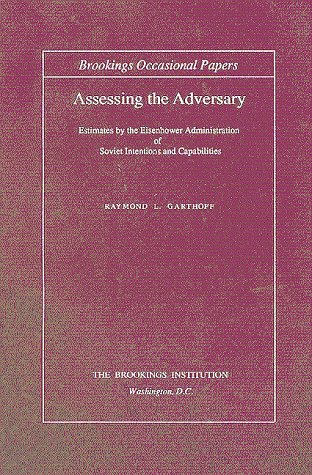The fundamental question underlying one government's assessments of another, particularly an adversary, pertains to its intentions. If it is perceived to be an adversary, a competitor, and an opponent, that question has been answered, at least in part. Other questions concerning intention nonetheless remain important: are the adversarys aims limited or unlimited; are its designs and plans for expanding its influences set or flexible, limited or constrained; do its policies pose a direct or indirect challenge; do its predicted actions create a need for countermeasures, including measures to lead off threats before they materialize? Clearly, such questions must embrace capabilities as well as intentions, inasmuch as policies and actions are necessarily based on relative capabilities. What are its potentialities, particularly to cause harm, and what are its vulnerabilities to one's own actions? In this volume, Raymond L. Garthoff answers these questions surrounding the Eisenhower Administrations foreign policy and military estimates of the Soviet Union. Much has been written concerning the beginning of the Cold War, but never has an author used the historic record and remanufactured the outcomes and diplomatic charges in such a fascinating way. This is truly a unique presentation of the historical record, which allows the reader to relate to a fascinating and dark period of diplomacy and foreign policy.
- ISBN10 0815730578
- ISBN13 9780815730576
- Publish Date 1 August 1991
- Publish Status Out of Print
- Out of Print 29 July 2005
- Publish Country US
- Imprint Brookings Institution
- Format Paperback
- Pages 60
- Language English
